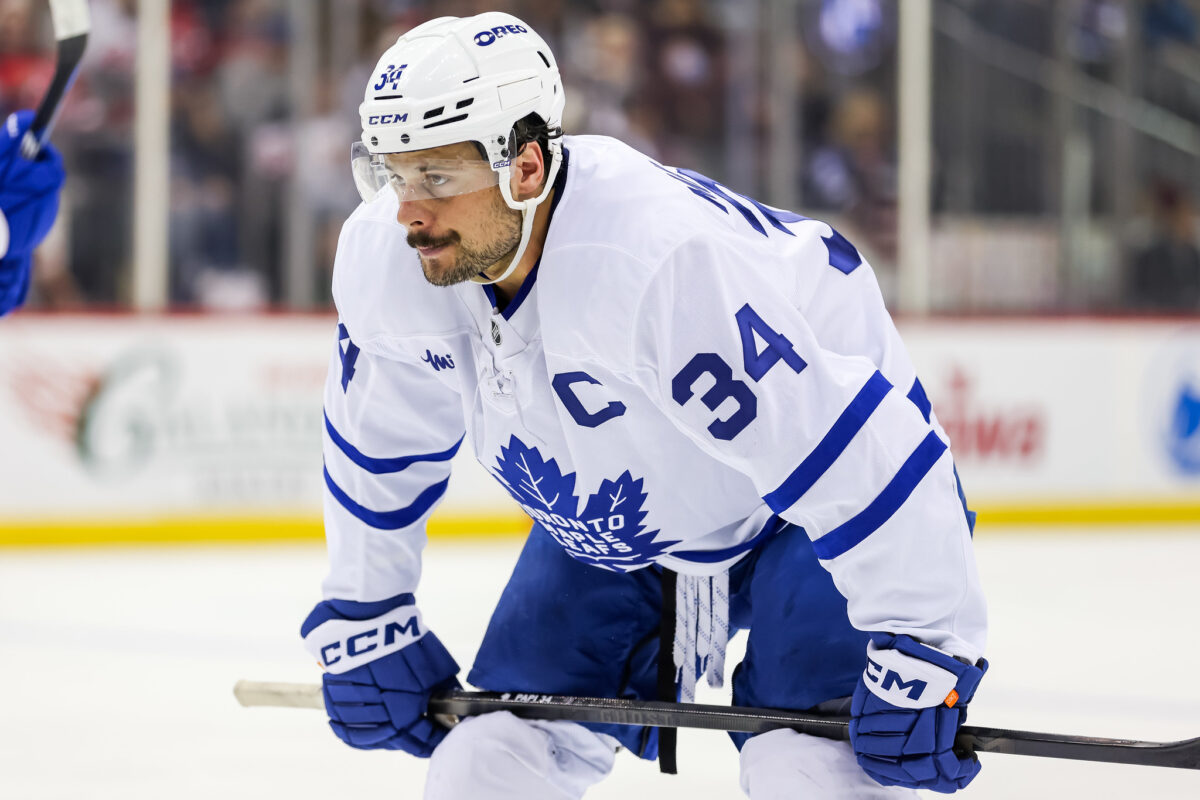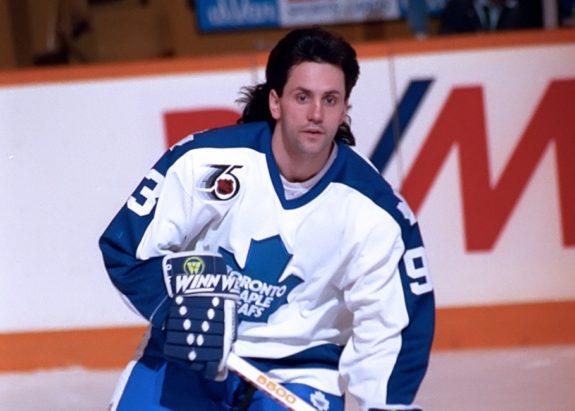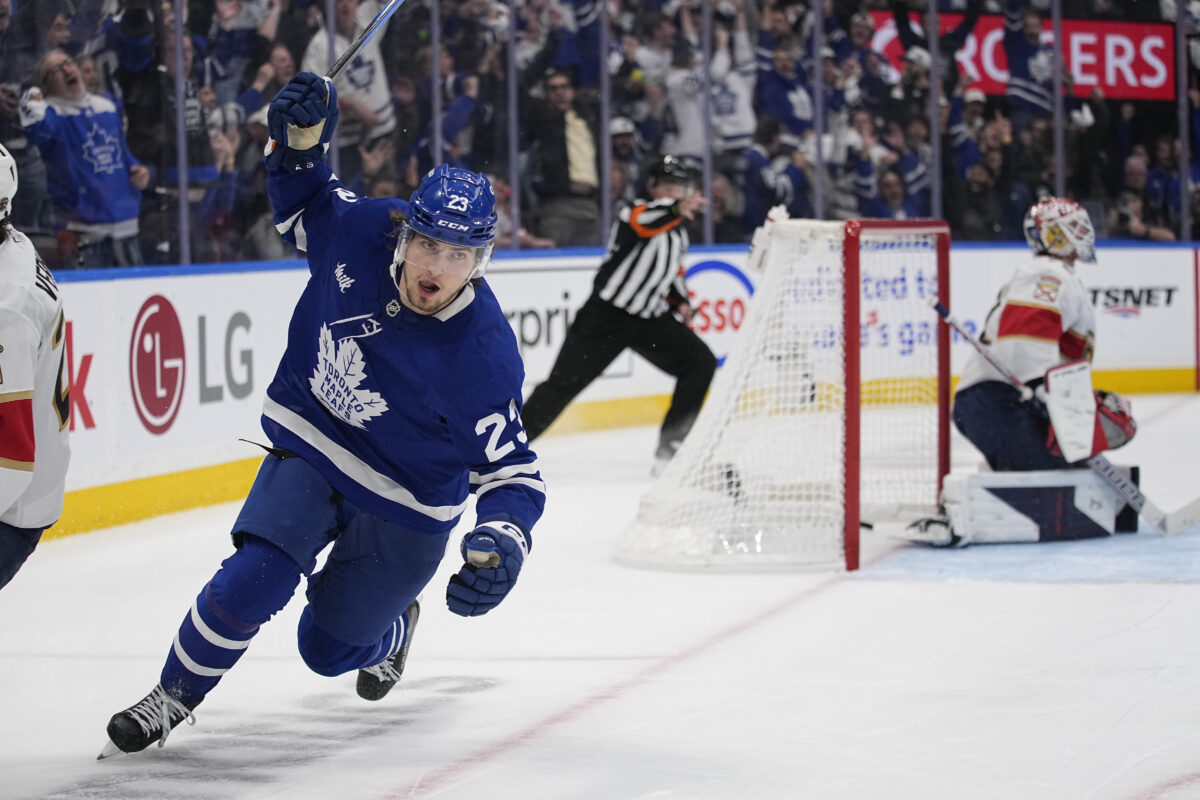The Toronto Maple Leafs have skill in abundance, but one question hangs over them this coming season: Do they have the mean streak it takes to win when it matters most? The core of Auston Matthews, John Tavares, William Nylander, and Mitch Marner has carried the team into the postseason year after year. Still, the lack of consistent grit, gamesmanship, and fire remains a sticking point.
Related: 5 Changes Maple Leafs Fans Want to See
With general manager (GM) Brad Treliving shaping the roster, the Maple Leafs have added size on the margins. But the honest answer might not be about adding muscle—it could be about changing mentality.
Matthews and the Physicality Question
Matthews is one of the most dominant players in hockey, but his impact is rarely seen through physical play. That doesn’t mean he doesn’t use his large frame well. He does. For example, he uses his size to protect the puck and win battles. He uses his speed to sneak up on skaters and steal pucks. But, all that said, although he’s had a tussle or two with Rasmus Dahlin, he isn’t the kind of player who makes opponents wary of crossing him.

The question is whether he needs to change. Does Matthews have to take a page from Brady Tkachuk’s playbook—becoming not just a goal scorer, but also a fire-starting leader who changes the temperature of the game? He’s certainly big enough. But it’s not his instinct, and forcing that style risks dulling the edge that makes him great.
Related: What if Peter Forsberg Remained Healthy?
There’s an argument to be made that Matthews needs to tone up his vocal leadership. Still, when opponents know the Maple Leafs’ best players won’t engage in scrums or respond to cheap shots, it limits the team’s emotional pushback. One of the big Maple Leafs questions of the season is how Matthews’ leadership will morph in his second season as the captain.
Doug Gilmour: The Ultimate Maple Leafs Edge
One of the most impactful Maple Leafs players of the past half-century was Doug Gilmour—nicknamed both “Killer” and “Charlie.” Gilmour wasn’t the biggest player on the ice, standing 5-foot-11 and roughly 175 pounds, but he had a mean streak a mile wide. He relished the battles, front and centre in the chaos, forcing opponents to take notice.

What set Gilmour apart wasn’t just his offensive skill, though he was incredibly gifted. It was his willingness to mix skill with intimidation, to play with bite and make the opposition uncomfortable. He led by example, drawing energy from battles while inspiring teammates to raise their level. Few Maple Leafs in recent years have come close to that balance of craft and meanness.
Related: Canadiens 2025-26 Player Previews: Patrik Laine
Even players like Brad Marchand, who thrive on creating chaos, don’t carry the same relentlessness or mean streak that Gilmour exhibited. He was all-in, every shift, every game, and the Maple Leafs felt it. That kind of edge is precisely what this team is missing—and it can’t be faked. Physicality is one thing, but the desire to use it on the ice is another. Like them or not, for good or for bad, this Maple Leafs squad isn’t mean and willing to play nasty.
Matthew Knies: A Chance to Channel Gilmour
Enter Matthew Knies, a young winger with size (6-foot-3 and 225 pounds) and the kind of physicality the Maple Leafs have lacked. Over two seasons, he’s logged 250 hits and shown flashes of the meanness that can tilt a game. What Knies needs now is guidance. Someone—be it Craig Berube or the coaching staff—could pull him aside, show him film of Gilmour, and nurture that killer instinct.
Knies already has the tools: the size, the skill, the willingness to engage physically. The missing piece is the mindset Gilmour embodied—taking ownership of the chaos, becoming a leader who isn’t afraid to challenge opponents or spark momentum through intensity. If Knies can internalize even a fraction of that, he could become the player who gives Toronto the edge it has been chasing for years.

(Mandatory Credit: John E. Sokolowski-Imagn Images)
This isn’t about turning Matthews or other stars into agitators. It’s about surrounding them with teammates who set the tone, elevate energy, and make the Maple Leafs harder to play against, especially in the postseason. Knies (and perhaps Bobby McMann, although his nature is to play more on the periphery) has the potential to be that player.
Finding the Missing Ingredient
Treliving’s offseason moves show he understands the gap. Size and depth help, but the emotional edge—the grit, the meanness, the gamesmanship—has to come from within the roster. Gamesmanship isn’t just about dropping the gloves; it’s about standing your ground, sending messages, and controlling the emotional temperature of a game.
Related: How the Dubas vs. Lamoriello Decision Shaped the Maple Leafs
If Toronto can combine Matthews’ scoring, the veteran leadership of Tavares, and Knies’ emerging bite, the team may finally close the gap that has haunted them for years. Until then, the question remains: will this group ever be nasty enough to win when the stakes are highest?
[Note: I want to thank long-time Maple Leafs fan Stan Smith for collaborating with me on this post. Stan’s Facebook profile can be found here.]
